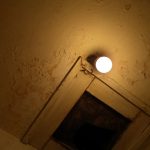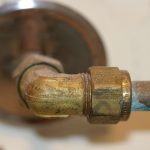As many people are already aware, we are experiencing a considerable problem regarding the levels of lead in our
water supplies across the entire country. This issue has received extensive coverage in the media, and some people are worried about the consequences. There is no getting away from the fact that lead exposure is a serious health issue that needs to be addressed. Government bodies are starting to deal with the problem, but it may be prudent to learn some more about the issue.
The Dangers of Lead in Tap Water:
Many people are already aware that lead is harmful to their health, but how dangerous is it? The level of lead that you are exposed to is an important factor in how badly your health could be affected. The lead that we ingest in our tap water could come from a number of sources, including chips of old lead paint, lead contaminated runoff and soil that is contaminated with lead. Water is an amazing solvent, given enough time it can dissolve all kinds of material including lead. As a result, there is no way to tell that your tap water is contaminated with lead using your senses. The key issue then is to detect the presence of lead and if any is found, remove it from your water supply.
How Can You Detect Lead in Your Water Supply?
Your water could be contaminated with lead and it will still look and taste like regular tap water. The only way to detect the presence of lead is to carry out a laboratory test. Start by looking for a lab that has been certified by the Department of Environmental Protection (DEP). These water tests are simple to carry out, very reliable and affordable. While waiting for the DEP lab results, you could contact your local water department and ask them if there are any lead service lines going into your home. Another consideration is the presence of any lead inside the plumbing in your home. As a rough guide, any home built prior to 1986 could be at risk of lead contamination from lead pipes, fixtures, and fittings. New regulations, for lead free requirements, were introduced in 2014 to ensure that all new plumbing installations limited lead to 0.25%.
What Can You Do if There is Lead in Your Water Supply?
The worst case scenario is a return of the DEP results indicating the presence of lead in your water supply. It also may have become apparent that you have lead plumbing fixtures and fittings in your home. The first thing to do is not to panic and address the problem calmly. Firstly, stop drinking any untreated tap water and try to limit the exposure to warm or hot tap water. When tap water is warm or boiled it can contain larger concentrations of lead that should not be ingested. Bathing will be fine if the quantity of lead present does not exceed the
EPA’s action level as stated on their website. It may be necessary to install some kind of whole house water filtration system that can address your lead problem. If you have lead plumbing in your home, a local
plumbing professional will be able to remove it and replace your system with a safer and more modern plumbing system.
By Giovanni Longo President Flood Brothers Plumbing
Giovanni Longo is a 3rd generation master plumber who has been practicing his craft and trade in the greater Los Angeles area for well over a decade and a half. A plumbing and hydraulics-engineering innovator, Giovanni’s particular world-class expertise focuses on dealing with challenging sewer system designs as well as resolving complex commercial and residential draining issues. As a certified Flood Mitigation expert, he is also well versed in a wide variety of water damage and remediation solution.





